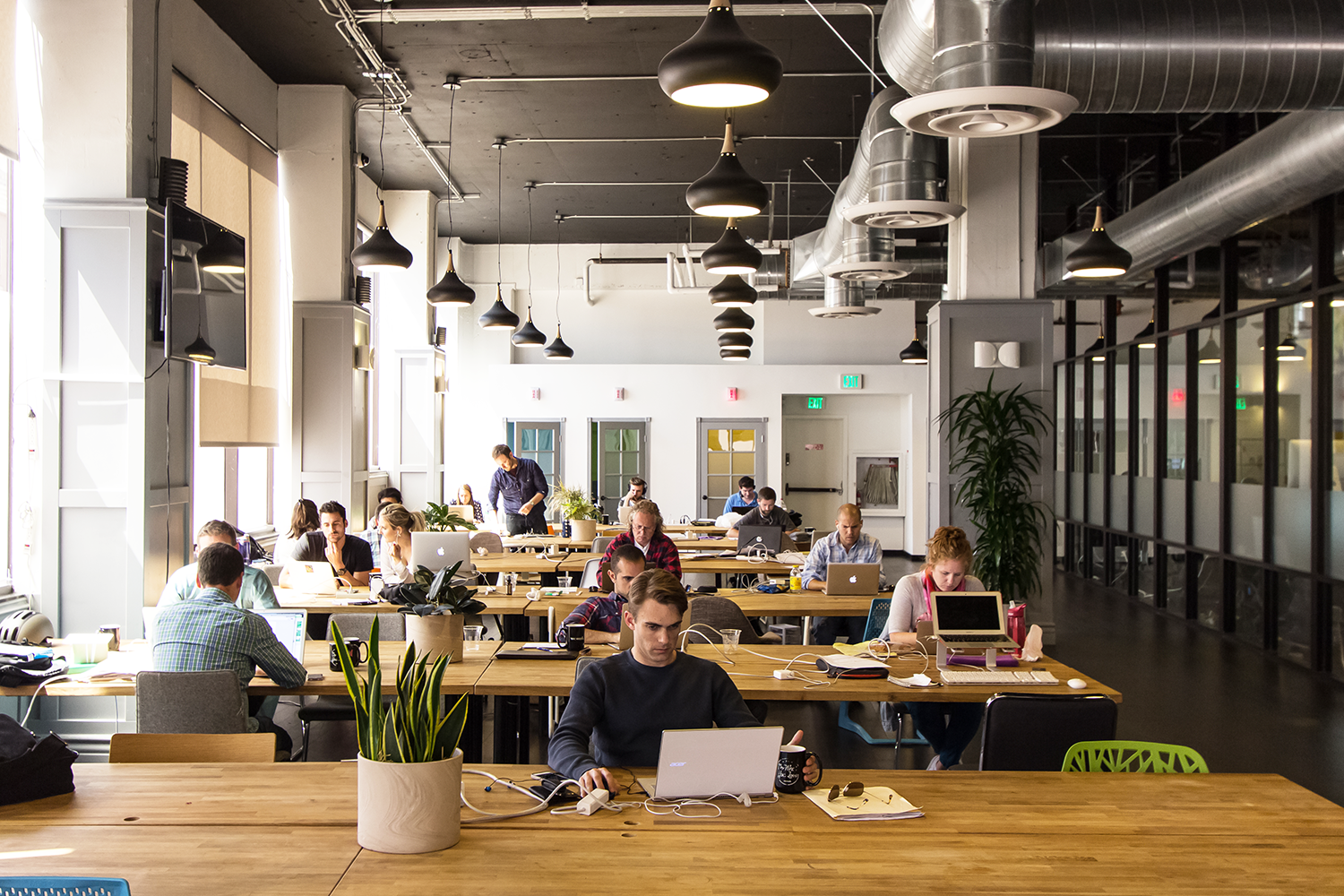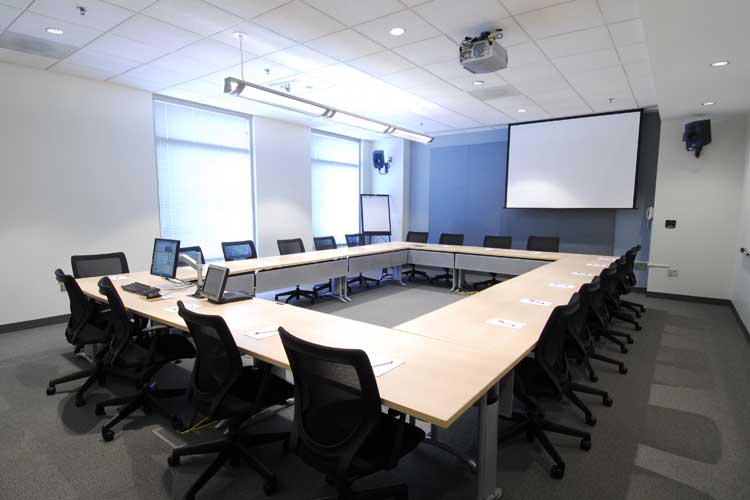Introduction:
“Wholehearted work ethics come at work when you’re in a good office environment.”
First of all, let’s know what an office is! An office is a place, edifice or a room where corporate or industrial or government organisations’ workers individually or in a team perform specific executive and administrative works sitting at desks working with computers, laptops, phones or tablets etc.
Preliminarily office was categorised as a small office or a big office. But currently, the office conception has changed to “Co-Working space vs Traditional office.
Both the generalities have the same reference that’s working in an office but aren’t equal in meaning.
The twist is simply we can say the traditional office has the prevailing typical workroom conception whereas co-working space is the new age era innovative conception of working together.
So let’s begin the content ‘co-working space vs traditional office ’ to know which is better and preferable.
Traditional Office:
In ‘co-working space’ vs traditional office, made for productivity and effectiveness, traditional office spaces are a private headquarter for the organisation.
You have the option to separate the outlay up into compartments or divisions for individuals.
Your business takes care of setting up the office and all office admin and supervision tasks, similar as managing internet, serviceability, office furnishings and stuff. Each person is silted in a cabin or private office.
From getting an internet connection to setting cabinetwork, from hiring an office administrator to essentials, every element is your decision.
A traditional office is constructed on the foundation of privacy. That means that if you hold a traditional office it’s entirely yours. Once you lease it, you’re in charge of the design and how it’s set up.
It normally means one business leasing one to multiple bottoms or a whole structure. They can be set up exactly to your specifications to suit your business’s needful.
To elaborate on ‘co-working space’ vs traditional office, first, we should know about the pros and cons of a traditional office.
Advantages:
Branding and commercial culture:
The entire office is yours and can reflect your brand and your corporate culture.
You can design your space to accommodate the unique requirements and values of your company and also reflect your corporate culture. The whole office place encapsulates your trademark.
Privacy:
Because you are not sharing the space, it may be easier to schedule private meetings and your clients can also feel easy and self-assured.
Confidentiality and privacy are maintained for clients. You’ll also have better overall control of the allocation of appointed areas for segregation. Each worker has his/ her own space and separateness.
Individual output:
Traditional offices encourage individual work.
Disadvantages:
• Less networking chances:
There are lesser opportunities to network with individual beings outside your industry and minimum social relations.
Minimal occasions to unite and lesser of a chance of connecting with people from other companies or diligence.
• Separation:
Individual cubicles produce barriers among the workers, basically discouraging co-operation and communication between them.
• Office handling tasks:
Running and managing an office may take away concentration from projects and bring a further rigid oversight.
• Long-term commitment:
Traditional offices constantly come with long-term leases and commitments budget-wise. This includes leasing the office for a longer period and paying rent to a landowner.
Maintenance costs when you lease a traditional office, you’ll have to furnish and equip your space. This may also contain high investments like assembling out amenities and meeting cells.
• Susceptible to monotonousness or “brain drain” from the same routine. The same decor can readily lead to unhappiness, restlessness, or indeed unproductiveness among the workers and can be harder to adjust to changes in real-time.
. • Feeling of aloneness that comes with a 9-5 schedule.
• Workplace relations –
the same people in the same place every day is a situation that raises the chances of either intimate connections forming or even staff not getting along.

• Office operation –
either the proprietor or an administrator has to manage this kind of work if you want the company to work like a well-waxed machine.
Co-working Spaces:
Co-working spaces continually have an open-conception layout and are shared with anyone who’s a member of the space.
In order to maintain an ambience of coordination and communication, the spaces are generally filled with comfortable cabinetwork, shared technology like printers and Wi-Fi, and indeed free coffee.
In the discussion on ‘co-working space’ vs traditional office, co-working spaces are a newer notion that has proven to have numerous good sides to them.
And people are furthermore and more interested to experience this co-working sensation.
Yet, there’s quite a common misconception that co-working spaces are these enjoyable places with ping pong tables, bean bag chairs and an unlimited supply of snacks where the sun shines all the time and everyone is happy.
Although it has some trueness to it, co-working spaces are relaxing simply described as a shared office place having flexible work atmosphere, whether it’s a devoted desk in a collaborative space or a private serviced office within a shared office position.
Now after understanding the pros and cons of co-working space we may conclude which is better for our work in ‘co-working space’ vs traditional office.
Advantages:
•Collaboration and networking openings:
There are multiple occasions to meet individuals whom you may not have met else. When you work in a place where other companies or even freelancers work as well, the networking chances are endless.
• No varied expenditures:
Costs like serviceability, modifications and movables are all included in your cost. There are no high over-frontal costs or long-term commitments.
You can pay depending on the space you choose. Of course, it’s the cheaper option. Plus it’s move-in ready and you more frequently than not, don’t need to pay for utilities and upkeep.
•Change of decor:
The dynamics change daily, if not hourly. Taking that into account and the different people who work in the same spot, boredom isn’t an option. The atmosphere is dynamic and can help with elevating workers’ energy levels and reducing stress.
• Flexibility:
Workers can actually move around and aren’t tied to a specific desk. This plays a big part in their internal health also.
Disadvantages:
• Branding:
With a couple of organizations working in the same place, there are smaller branding openings.
• Distractions:
Because of the nature of the work terrain ( busy, louder, more dynamic), there will be more distractions that can spark procrastination and intrude with the work.
• Structure:
This means less direct contact between the hierarchy in the company, which can lead to problems in communication among all of the workers and dwindle productivity. No face-to-face, in-person access to peers and associates.
• Privacy:
Or the lack thereof. Open office context makes it hard to find privacy.
• Alternatives:
There’s always a better choice to be found. However, it can also serve remotely, if your business can work in a co-working space. And that’s the cheapest of all options. For small businesses, cost-effective will be of working from home.
If you’re not willing or competent to draw on your own frame for productivity, If you to do better with an easily defined path to travel, there’s no shame in preferring a traditional office workplace as a co-working space isn’t for you.

Conclusion:
Above are the pros and cons of the ‘co-working space’ vs traditional office system. Let’s be realistic, several individuals will seldom want to work in an old-fashioned office.
This is particularly true for millennial workers, who would be more productive and perform better in the new-fashioned office.
On the other hand, it’s also harder to vend your brand to clients if it looks outdated leaving them feeling reluctant to work with you.
So we can conclude that in the discussion of ‘co-working space vs traditional office’ both have balanced advantages as well as disadvantages. So we can apt for any of the two as per our needs and convenience.
As the work ethics are improving nowadays people prefer co-working space over traditional office because to arrange.
Maintaining everything simultaneously with office work is very tiresome but that does not mean the demand for traditional office is decreasing. Both are having the same importance.
Included
amenities
Our co-workspaces are equipped with all basic work amenities; this ensures a comfortable work experience for you and your team.
Partner with us today!


